-
Contact
Sales & Customer Service
0800 612 6537 support@safelincs.co.uk Live ChatDelivery Enquiries
0800 077 6149 - Resources
Fire & Safety Solutions
CALL OUR TEAM NOW 0800 612 6537
Also FREE from UK mobiles
Free Delivery
on 100s of Products
Live Chat - Online
Instant help & Advice
Trade Discounts
and exclusive pricing
0% Credit Available
Open an account now
5 Star Customer Feedback
Smoke, Fire & Gas Detectors
Your home's first line of defence against fire starts with reliable smoke detection. When every second counts, you need smoke alarms that respond fast and work without fail. Smoke alarms save lives - they're your early warning system, giving you precious time to escape when fire strikes. In the UK, working smoke alarms reduce your risk of dying in a house fire by half. We stock optical smoke alarms and heat detectors, each responding to different fire conditions, allowing you to choose the right protection for each room.
Read more about smoke, fire and gas detection...
What types of smoke detectors work best?
Optical smoke alarms excel at detecting smouldering fires, like those caused by cigarettes or electrical faults. They're perfect for hallways, bedrooms and living areas where smouldering fires may be more likely. Heat detectors make sense in kitchens and garages where smoke alarms might trigger unnecessarily from cooking fumes or steam.
Modern smoke detectors come equipped with features that enhance their reliability and user-friendliness. Look for units with long-life batteries, test buttons, and interconnected systems that sound throughout your home when one detects smoke.
How often should you test your smoke alarms?
Test your smoke alarms at least every month. Press the test button and listen for that loud, unmistakable beep. If it sounds weak or doesn't work, change the battery immediately. Clean your alarms every six months with a soft brush or vacuum cleaner attachment. Dust and debris can interfere with their sensors. Mains-powered units and battery-powered smoke alarms should be replaced after 10 years, as the sensors start to degrade, affecting the performance of the alarm.
Where should you install smoke alarms?
Install smoke alarms on every level of your home, including the basement. Put them in hallways outside bedrooms and sleeping areas. Mount them in the centre of the ceiling, because smoke rises. Avoid placing them near windows, doors or air vents where draughts might interfere with detection.
In larger homes, consider interconnected smoke alarms that communicate with each other. When one detects smoke, they all sound, giving everyone maximum warning time. This is particularly important in multi-storey homes where you might not hear an alarm from another floor.
What about gas detection?
Natural gas detectors alert you to gas leaks before they become dangerous. They're instrumental in kitchens, utility rooms, and other areas where gas appliances are present. Some units detect multiple gas types, providing comprehensive protection in a single device.
How do you choose the right fire detection system?
Consider your home's layout, your family's needs, and your budget. Battery-powered units offer flexibility and easy installation. Mains-powered systems provide continuous protection, eliminating the need to worry about battery life. For comprehensive coverage, combine different detector types throughout your home.
Think about special requirements too. If someone in your household has hearing difficulties, consider vibrating or strobe light alarms. Smart smoke alarms can send alerts to your phone, making them ideal for rental properties or when you're away from home.
Ready to protect your home and family? Browse our complete range of smoke alarms, gas detectors, and fire safety equipment. Every product meets British safety standards, and our expert team is here to help you choose the right protection for your home.
Frequently Asked Questions (FAQs)
Who is eligible for free smoke alarms in the UK?
Some fire services across the UK offer free smoke alarms to residents who need them most. You may be eligible if you're over 65, have a disability or live in a high-risk area.
People with mobility issues, sensory impairments, or health conditions that affect their ability to escape in case of fire may qualify for free alarms. Some areas also prioritise low-income families and those in social housing.
Each fire service has its specific criteria, so please contact your local fire station or visit their website for more information. Many offer free home safety visits where they'll assess your needs and install suitable alarms at no cost.
What's the difference between optical and ionisation smoke alarms?
Optical smoke alarms use light sensors to detect smoke particles. They're excellent at spotting slow-burning fires from soft furnishings and are less prone to false alarms from cooking.
Ionisation smoke alarms contain radioactive material and were traditionally used for fires that burn rapidly. However, they're being phased out across the UK due to safety and disposal concerns.
We recommend optical smoke alarms for all locations where ionisation alarms were previously used. They're safer, more reliable, and work just as well for all types of fire.
Where should I install smoke alarms in my home?
You need at least one working smoke alarm on every floor of your home. Install optical smoke alarms in living rooms, bedrooms, and hallways where they can detect smouldering fires.
Don't put smoke alarms in kitchens or bathrooms where steam and cooking fumes cause false alarms. Use heat alarms in kitchens instead - they detect temperature changes without false alarms.
Mount alarms on ceilings in the centre of rooms, at least 30cm from walls and light fittings. This ensures they detect smoke as early as possible.
What's the difference between smoke alarms and heat alarms?
Smoke alarms detect smoke particles in the air and are perfect for living areas where fires typically start slowly. They give you the earliest warning when materials like furniture or wiring begin to smoulder.
Heat alarms detect temperature changes and are ideal for kitchens and garages. They trigger when the temperature reaches approximately 55°C or rises rapidly, thereby avoiding false alarms caused by cooking.
Both types are essential for complete protection. Use smoke alarms throughout your home, and heat alarms in kitchens and garages where smoke alarms would give false alarms.
Do I need carbon monoxide detectors in addition to smoke alarms?
Yes, it is always advisable to have at least one carbon monoxide alarm in your home. This is especially important if you have any fuel-burning appliances such as gas boilers, wood burners or open fires. CO is invisible and odourless but deadly.
Install CO detectors in rooms with fuel-burning appliances and in hallways near bedrooms. Combined smoke and CO alarms can provide dual protection in a single unit.
CO detectors need to be replaced every 5-10 years, depending on the type. Some detectors have sealed batteries that last the life of the device, while others require annual battery changes.
For comprehensive guidance on keeping your home safe from gas-related risks, check out our detailed guide on gas safety for your home.
BRK 600 and 700 Series
How to Replace Discontinued BRK Mains-Powered Alarms (01:47)
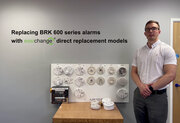
Learn how to replace discontinued BRK 660MBX optical, 670MBX ionisation, and 690MBX heat alarms with the easichange® direct replacement models.
BRK 660MBX optical smoke alarm backup battery replacemen... (02:24)
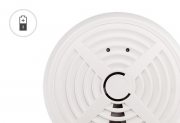
How to replace the alkaline backup battery in the BRK 660MBX optical smoke alarm.
BRK 670MBX ionisation smoke alarm backup battery replace... (02:32)
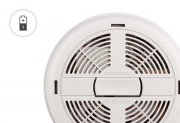
How to replace the alkaline backup battery in the BRK 670MBX ionisation smoke alarm.
BRK 690MBX heat alarm backup battery replacement (02:33)
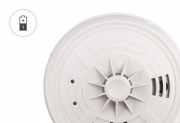
How to replace the alkaline backup battery in the BRK 690MBX heat alarm.
BRK 670MBX and 670MRL smoke alarm head removal (01:26)

How to remove the alarm head of the BRK 670MBX and 670MRL smoke alarms.
BRK 660MBX and 660MRL smoke alarm head removal (01:26)
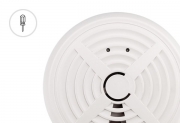
How to remove the alarm head of the BRK 660MBX and 660MRL smoke alarms.
BRK 690MBX and 690MRL heat alarm head removal (01:24)
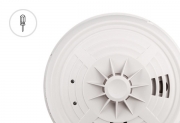
How to remove the alarm head of the BRK 690MBX and 690MRL heat alarms.
BRK 760MBX and 760MRL smoke alarm head removal (01:44)
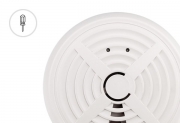
How to remove the alarm head of the BRK 760MBX and 760MRL smoke alarms.
BRK 770MBX and 770MRL smoke alarm head removal (01:41)

How to remove the alarm head of the BRK 770MBX and 770MRL smoke alarms.
BRK 790MBX and 790MRL heat alarm head removal (01:37)
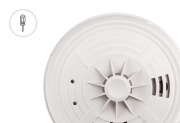
How to remove the alarm head of the BRK 790MBX and 790MRL heat alarms.
UltraFire Videos
UltraFire UBCO1D Digital Carbon Monoxide Alarm Overview (00:30)
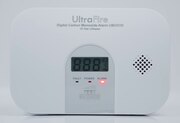
Meet the UltraFire UBCO1 carbon monoxide alarm with a digital display to show the current CO reading and BS EN 50291-1 certification.
UltraFire UBCO1 Carbon Monoxide Alarm Overview (00:31)
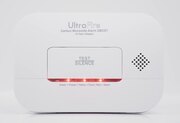
Meet the UltraFire UBCO1 carbon monoxide alarm with clear LED indicators and BS EN 50291-1 certification.
FireAngel Videos
FireAngel ST-750 Launch Video (01:26)

A short introduction to the new FireAngel ST-750 Thermoptek smoke alarm.
FireAngel Optical Smoke Alarms (00:40)

How does an optical smoke alarm detect smoke and where in your house should you install one?
FireAngel Thermoptek Sensor Technology (00:42)

What is the FireAngel Thermoptek sensing technology and why do I need it?
Introducing the FireAngel WST-630 (03:26)

An introduction to the FireAngel WST-630 wireless Thermoptek smoke alarm.
FireAngel Wi-Safe 2 (00:43)
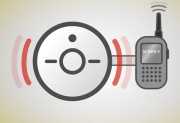
What is FireAngel's Wi-Safe 2 technology and what benefits can it provide over traditional alarm systems?
FireAngel Digital Screens (00:39)

A short video explaining digital LCD screens on carbon monoxide detectors.
FireAngel Long-Life Batteries (00:42)
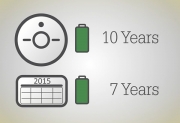
What are the benefits of buying a smoke or CO detector fitted with long-life lithium batteries?
FireAngel Certification (00:40)

Smoke and CO alarms should be tested and comply with BS EN performance standards.
FireAngel Video Guides
FireAngel Long-Life Batteries (00:42)

What are the benefits of buying a smoke or CO detector fitted with long-life lithium batteries?
FireAngel Thermoptek Sensor Technology (00:42)

What is the FireAngel Thermoptek sensing technology and why do I need it?
FireAngel Wi-Safe 2 (00:43)

What is FireAngel's Wi-Safe 2 technology and what benefits can it provide over traditional alarm systems?
FireAngel Digital Screens (00:39)

A short video explaining digital LCD screens on carbon monoxide detectors.
FireAngel Certification (00:40)

Smoke and CO alarms should be tested and comply with BS EN performance standards.
Ei140 Series Alarms
Remove an Ei144 heat alarm (01:04)
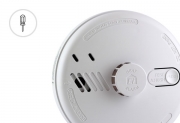
How to remove an Ei144 heat alarm from its base without an electrician.
Remove an Ei141 ionisation smoke alarm (01:04)
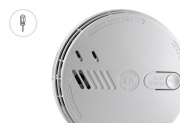
How to safely remove an Ei141 ionisation smoke alarm from its base plate.
How to test your smoke and heat alarms (00:33)
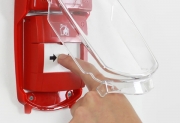
A simple guide to testing your smoke alarms. Make sure you and your family remain protected.
Ei146 smoke alarm battery replacement (01:47)
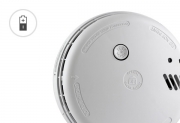
Replacing the back-up battery in your mains powered Ei146 optical smoke alarm.
Ei141 smoke alarm battery replacement (01:47)
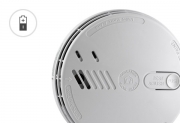
How to change the back-up battery in an Ei141 ionisation smoke alarm.
Remove an Ei146 optical smoke alarm (01:04)
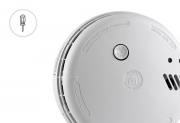
Quickly and easily remove an Ei146 optical smoke alarm from the ceiling.
Ei144 heat alarm battery replacement (01:38)
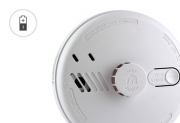
This video shows you how to renew the back-up battery in an Ei144 heat alarm.
Ei150 Series Alarms
Remove an Ei154 heat alarm (01:12)
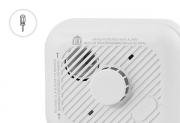
How to easily and safely remove an Ei154 heat alarm from the ceiling.
Remove an Ei156 optical smoke alarm (01:12)
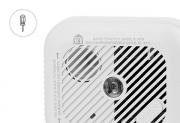
How to remove an Ei156 optical smoke alarm from its base without damaging the mounting plate.
Remove an Ei151 ionisation smoke alarm (01:12)
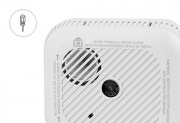
Removing an Ei151 ionisation smoke alarm from its base plate safely and quickly.
Ei160 Series Alarms
Remove an Ei161 ionisation smoke alarm (01:04)
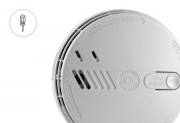
How simple it is to safely remove an Ei161 ionisation smoke alarm from the ceiling.
Remove an Ei166 optical smoke alarm (01:04)
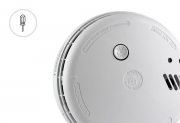
How to remove an Ei166 optical smoke alarm head from its base plate.
Remove an Ei164 heat alarm (01:04)
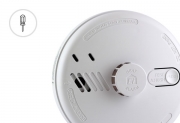
Removing an Ei164 heat alarm from its base plate quickly and easily.
How to test your smoke and heat alarms (00:33)

A simple guide to testing your smoke alarms. Make sure you and your family remain protected.
Radio-Interlinked Alarms
An introduction to radio-interlinked alarms (02:04)
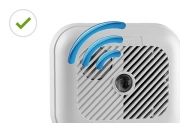
The many features and benefits of radio-interlinking smoke and heat alarms.
How to interlink Hispec RF Smoke, Heat, and CO alarms (03:05)
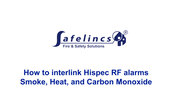
A simple guide on how to interlink Hispec wireless smoke, heat, and carbon monoxide alarms.
How to interlink Hispec RF Smoke, Heat, and CO alarms, a... (02:48)

A simple guide on how to interlink Hispec wireless smoke, heat, and carbon monoxide alarms, and test & hush control unit.
Adding a Test-Hush Control Unit to an existing Hispec RF... (03:47)

A simple guide on adding an Hispec Test / Hush Control Unit to an existing smoke / heat / CO alarm system.
Radio-interlink Ei3100RF series smoke alarms (01:57)
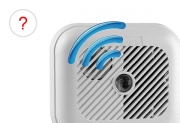
A simple guide to radio-interlinking smoke alarms from the Ei3100RF series.
Radio-interlink an Ei407 manual call point (03:25)
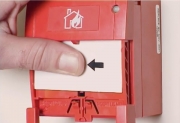
How to radio-interlink Ei3100RF series smoke alarms with an Ei407 manual call point.
Kidde Slick Radio-Interlinked Smoke and Heat Alarms - Ho... (01:53)
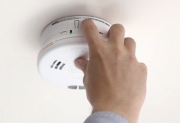
Instructions on how to house code the Kidde Slick RF smoke and heat alarms.
Smoke and Heat Alarm Accessories
Self-adhesive sticker pads for smoke and heat alarms (00:58)

When to use self-adhesive sticky pads for installation of smoke or heat alarms.
Kidde Mains Powered Alarms
Kidde 4973 smoke alarm battery replacement (01:42)

How to safely replace the back-up battery in a Kidde 4973 optical smoke alarm.
Kidde 4870 smoke alarm battery replacement (01:41)
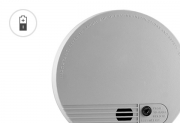
See how to change the back-up battery in your Kidde 4870 ionisation smoke alarm.
Kidde 4899 heat alarm battery replacement (01:32)
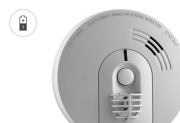
How to quickly and easily change the back-up battery in a Kidde 4899 heat alarm.
Carbon Monoxide Alarms
An introduction to the range of carbon monoxide alarms (01:16)
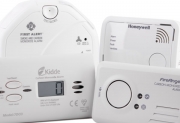
An introduction to the selection of Kidde and Ei Electronics carbon monoxide detectors we sell.
Where to install a carbon monoxide (CO) alarm (01:26)
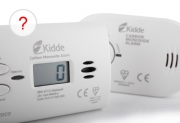
Where a carbon monoxide alarm should be installed to be most effective.
UltraFire UBCO1D Digital Carbon Monoxide Alarm Overview (00:30)

Meet the UltraFire UBCO1 carbon monoxide alarm with a digital display to show the current CO reading and BS EN 50291-1 certification.
UltraFire UBCO1 Carbon Monoxide Alarm Overview (00:31)

Meet the UltraFire UBCO1 carbon monoxide alarm with clear LED indicators and BS EN 50291-1 certification.
Fire Alarm Accessories
Resetting the Apollo XP95 Manual Call Point (00:29)
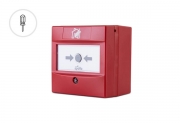
A short video demonstrating how to reset the Apollo XP95 manual call point after activation.
Resetting the KAC Sav-Wire Surface Mounted Indoor Manual... (00:23)
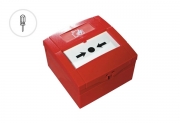
A short video demonstrating how to reset the KAC Sav-Wire Surface Mounted Indoor Manual Call Point after activation.
Our Official YouTube Channel
Subscribe to our official YouTube channel to watch step-by-step help guides, get expert advice and top tips about fire safety and to keep up to date with all our latest videos.
We upload new videos and content each month.
Visit Our YouTube Channel


















